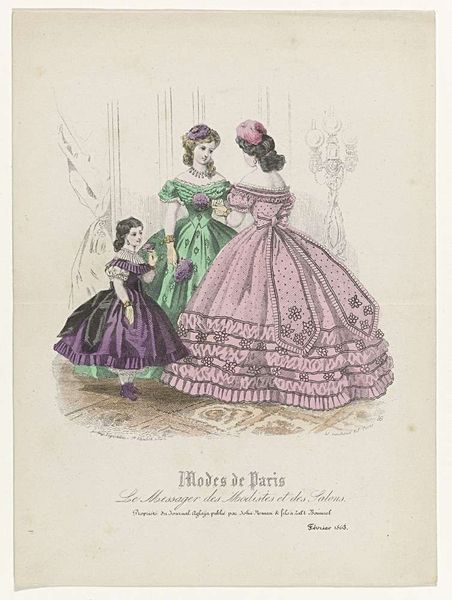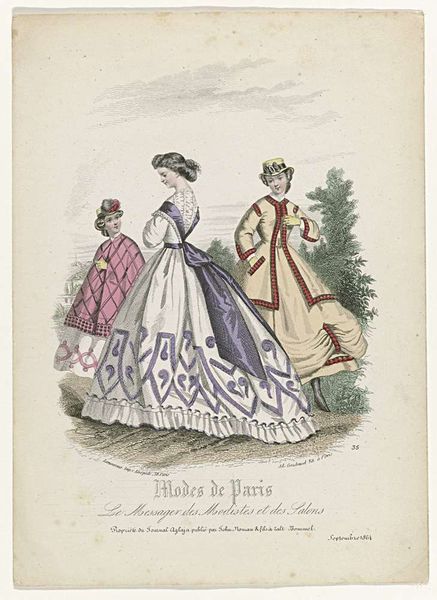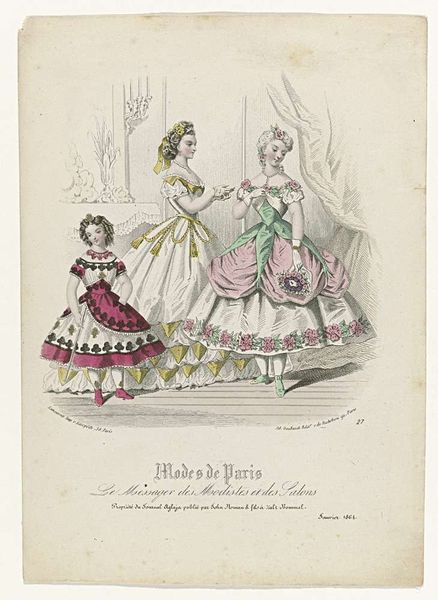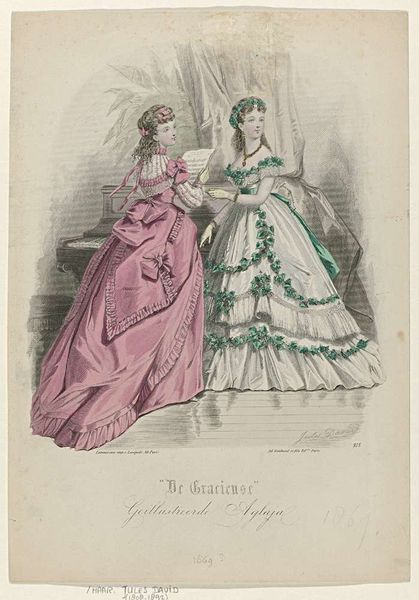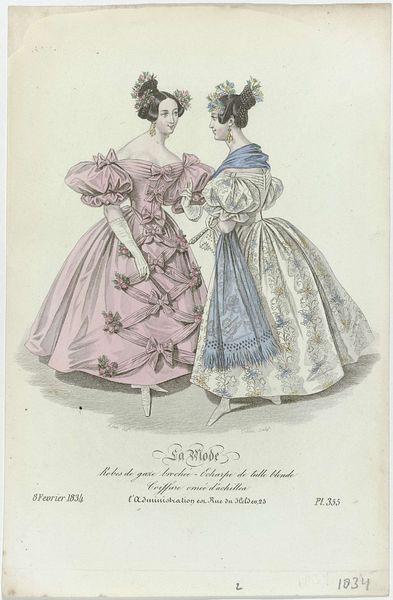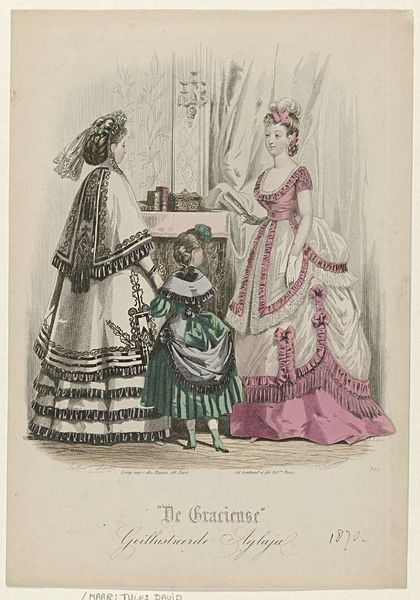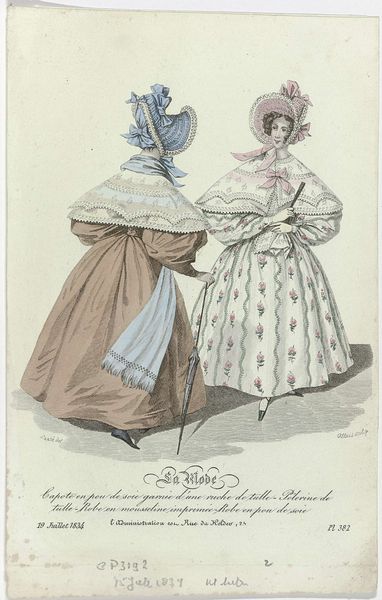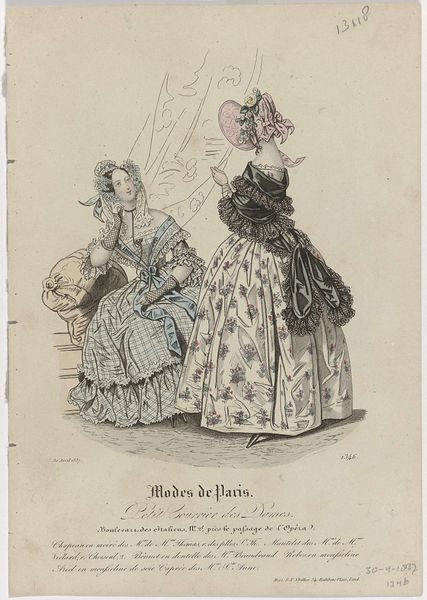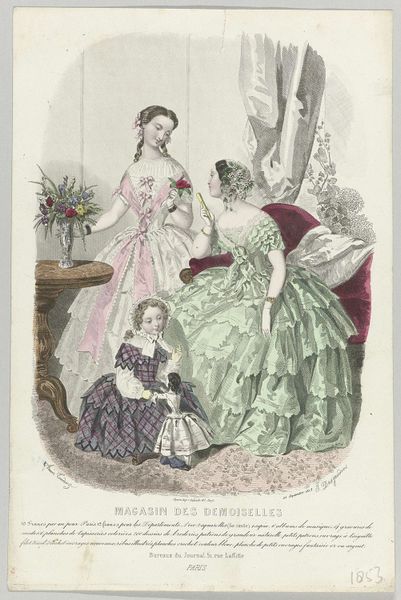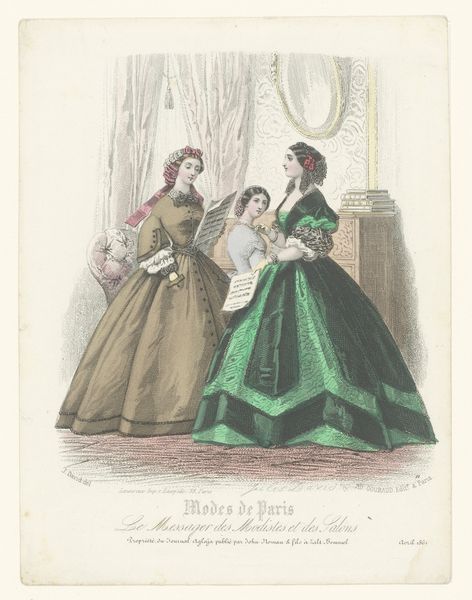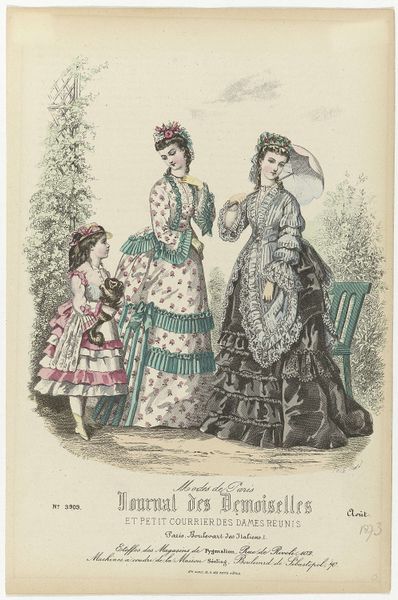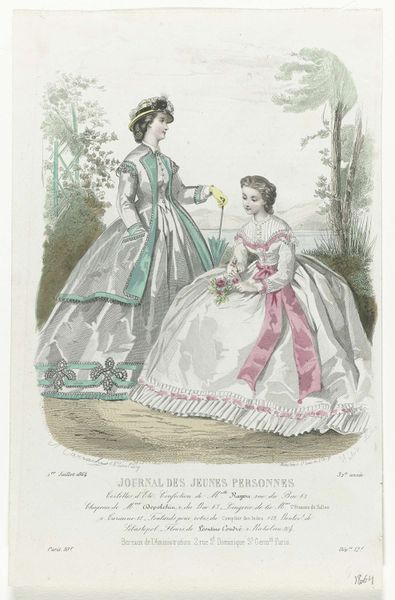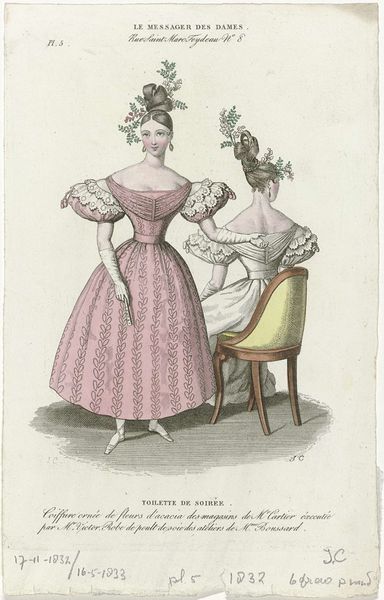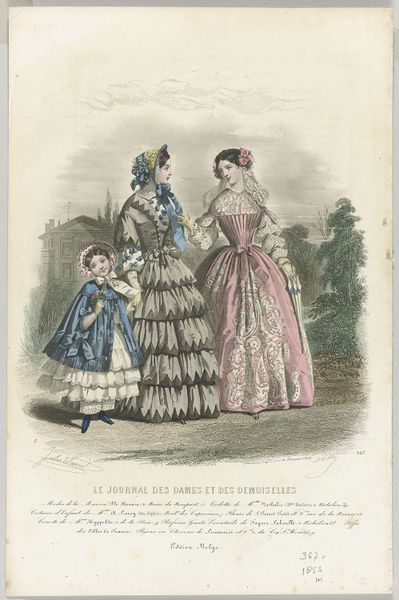
Le Messager des Modistes et des Salons, Modes de Paris, Journal Aglaja, mars 1864, No. 29 1864
0:00
0:00
Dimensions: height 203 mm, width 143 mm
Copyright: Rijks Museum: Open Domain
This fashion plate, titled "Le Messager des Modistes et des Salons", emerged from Paris in March 1864. Published anonymously, it offers us a glimpse into the sartorial expectations of bourgeois women during the Second Empire. Fashion plates like this one were not simply about clothes; they were about constructing and reinforcing a very specific image of femininity. The elaborate dresses, bonnets, and carefully posed figures all speak to the importance of appearance in defining a woman's social status and identity. Note the little girl: dressed in a miniature version of the adult women's gowns, she is already being trained into the performance of femininity. Consider the absence of any visible labor in the image. These women are presented as objects of leisure and consumption, their lives seemingly untouched by the economic realities that shaped the era. This representation upholds the era's gendered power dynamics, where women of a certain class were expected to embody refinement and domesticity. This image subtly perpetuates societal norms, reminding us of the roles and expectations assigned to women during this period.
Comments
No comments
Be the first to comment and join the conversation on the ultimate creative platform.
